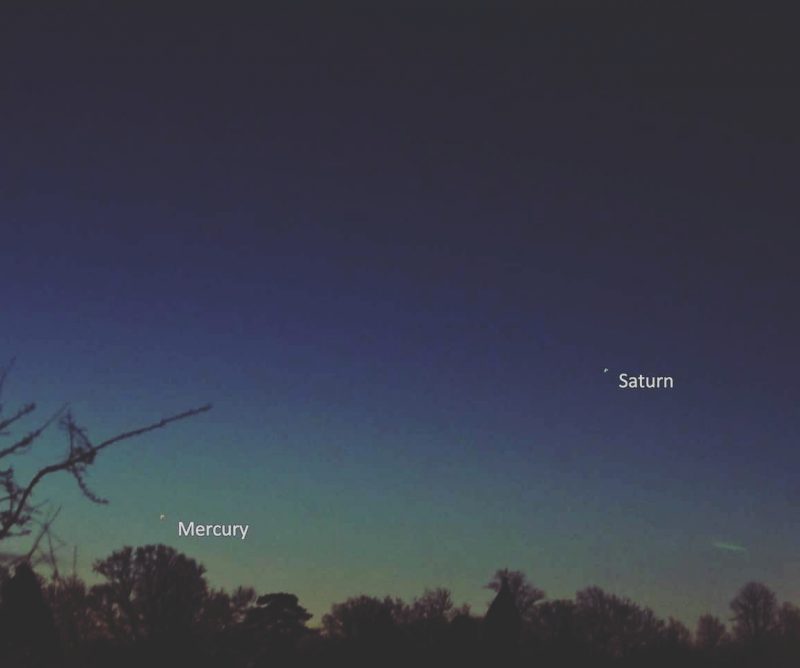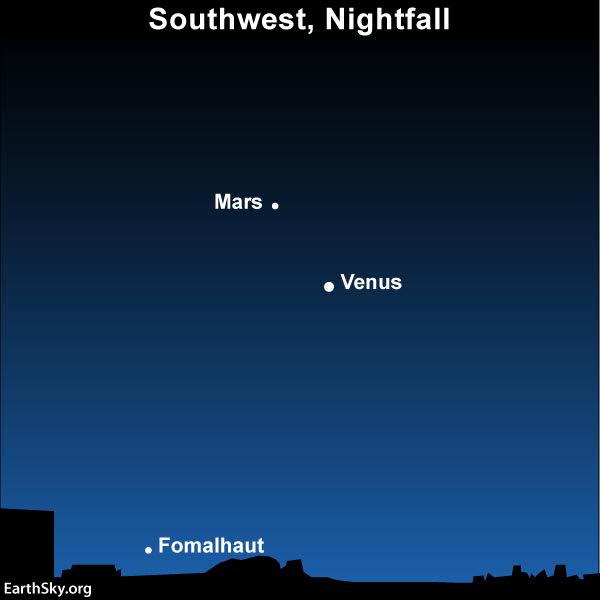Mercury, the innermost planet of the solar system, is oftentimes lost in the sun’s glare. But in a few more days – on January 19, 2017 – Mercury will be at its greatest western (morning) elongation of 24o from the sun. That means this elusive planet is now nearly at its farthest from the sun on our sky’s dome for this morning apparition. As seen from around the world, it’s visible in the eastern sky before sunrise.
An imaginary line from Jupiter through Saturn can help you locate Mercury near the eastern horizon, as shown on the chart at the top of this post. Jupiter is easy to find. It’s the brightest starlike object up before dawn now.
Also note the star Antares in the constellation Scorpius. Saturn and Antares both look like stars, but Saturn is a bit brighter and may shine with a steadier light than Antares. Also, if you look carefully, you can notice that Antares appears reddish while Saturn exhibits a golden hue. If you have difficulty discerning their colors with the eye alone, try your luck with binoculars.
Still not sure which object is which? As luck would have it, the moon can help. It’ll be sweeping past Jupiter in the next few mornings and then by Antares and Saturn on January 23 and 24.


Even with the help of the moon, Jupiter, Saturn and Antares … finding Mercury before sunrise might present a challenge. If you look too soon, Mercury will still be beneath the horizon; and if you look too late, Mercury will have vanished in the bright twilight.
To increase your chances of catching Mercury’s rather fleeting presence in the morning sky, find an unobstructed horizon in the direction of sunrise and bring along binoculars. Although Mercury is actually visible to the unaided eye in a clear sky, binoculars can help out when the seeing conditions are less than ideal.
From around the world, look for Mercury close to the sunrise point on the horizon somewhere around 90 to 60 minutes before sunrise. If you’re up before dawn’s first light, Mercury may or may not have climbed above your horizon. Click here for recommended sky almanacs; they can help you find Mercury’s rising time for your sky.

Bottom line: An imaginary line from Jupiter through Saturn points toward Mercury near the horizon. On January 19, 2017, Mercury will be at greatest elongation. That means it’s now nearly at its farthest from the sun on our sky’s dome for this morning apparition. Watch for it!












